Friday Apr 26, 2024
Friday Apr 26, 2024
Tuesday, 11 December 2018 00:00 - - {{hitsCtrl.values.hits}}
By Yolanthika Ellepola
The long-awaited Tourism Leaders’ Summit was held earlier this year with much grandeur under the theme ‘Integration of Global Value Chains for Sustainable Tourism Development in Sri Lanka: Inclusiveness, Coopetition and Innovation’.
The gala event jointly organised by the Alumni Association of the Tourism Economics and Hospitality Management (AATHEM) and the students of the Tourism Study Program of the Department of Economics, University of Colombo, welcomed distinguished internationally-acclaimed academics, business and hotel tycoons, dignitaries, industry professionals and the representatives of the international development communities. Ministers of Sri Lanka Tourism Development and Christian Affairs and Higher Education also attended this occasion.

Joint inter agency with the Customs, Department of Immigration and Emigration and the airport services will alleviate some of the impending
bottlenecks – M. N. Ranasinghe
An array of pertinent tourism related issues was deliberated ranging from ‘Strengthening Corporate Partnerships for Implementation of Tourism Strategies’, ‘Global Expectations of Sri Lanka Tourism Development’ to ‘Together Tourism for All’. An overarching issue discussed at this high-level forum was Sri Lanka’s inability to market the destination effectively.
Universally-renowned digital evangelist, e-commerce lecturer and trainer at the Google Digital Academy, Akvile Pareigyte made startling revelations that Sri Lanka as a destination was predominantly known for safaris rather than for weddings, honeymoons and wellness. More recently, international travellers prefer to reside in a locality for a maximum of three nights compared to the previous two weeks.
Given that ongoing digital marketing campaigns and promotional activities overseas are unfounded by research findings, this could have detrimental impacts in attracting market segments. If this trend prolongs, Sri Lanka will continue to merely attract sun, sea and sand tourists rather than a mix of high-end international travellers and specific market segments as intended.

Sri Lanka as a destination is predominantly known for safaris rather than for weddings, honeymoons and wellness – Akvile Pareigyte
Absence of a tourism product
While it is undeniably true that Sri Lanka should boost its digital marketing campaign to better target the intended audience, a top corporate leader in the nation’s hospitality and advertising industries, Dilith Jayaweera, denoted that Sri Lanka severely lacks a tourism product to promote. This stems from the fact that the country has failed to create a holistic and authentic product showcasing the country’s arts and crafts, wild life, national heritage, cuisine, spices and the like.
More importantly, inconsistent policies and practices have contributed towards a distorted message communicated to the international community which has led to only specific locations in Kandy, Galle and Colombo to remain popular tourist destinations, whilst other regions in the north and the east severely lag behind.
Furthermore, concerted efforts should be placed to entice the international traveller to truly experience Sri Lankan hospitality from the point of disembarking from the aircraft to arriving at the designated hotel. This will ensure repeat clients and uplift the image and reputation of the country. Collaborative partnerships amongst Airport Aviation Authorities, Customs, Civil Aviation and the Immigration and Emigration will ensure tourists receive a warm welcome to the island upon arrival.
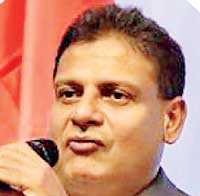
Sri Lanka severely lacks a tourism product to promote – Dilith Jayaweera
Congested International Airport
Given the fact that the Bandaranaike International Airport (BIA) handles 99% of all international passenger arrivals by air to the country, the airport is in urgent need of expansion. The multifaceted nature of this issue is the high cost of ground handling predominantly due to a monopoly held by Sri Lankan airlines, soaring costs of fuel and exorbitant parking and landing charges.
Due to these escalated costs, many international airline operators have deferred entry to Sri Lanka. Some airlines have chosen to carry extra fuel to prevent incurring these additional expenses. Airport Services Vice Chairman Captain Milinda Rathnayake acknowledged these bottlenecks and highlighted that several institutional and budgetary constraints have impeded the progress made to date.
Despite such limitations, a 15% tax refund at the departure terminal is given to attract more tourists to shop in Colombo and more recently the information centre at the BIA has been revamped to enhance the international travellers’ experience. Further plans to construct a pre-fabricated interim terminal building to ease tourist’s congestion are some of the developments made thus far.
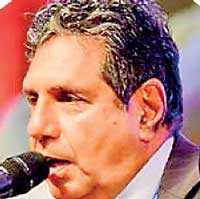
Several institutional and budgetary constraints have impeded the progress made to date
– Milinda Rathnayake
Although the Ministry of Transport, Civil Aviation Authority and Airport Services should be commended for its efforts to elevate the quality of airport services, these are unfortunately ad-hoc strategies. At present there is an absence of a clear policy governing the civil aviation which lacks in conformity to international standards.
Moreover, stringently-managed domestic airports by the Sri Lankan Air Force (SLAF) in Trincomalee, Batticaloa, Sigiriya and Palali should be liberalised to promote private sector participation, enhance connectivity to the north and the east and uplift the quality of services provided, especially since there is an increase in demand for hotels in the north and east coast.
Although developing these domestic airports will serve the demands of a specific clientele, domestic air traffic demand will be low in comparison to international arrivals due to improved surface transport networks. Nonetheless, investments in air services at domestic airports are central to augment the tourists’ experience.

Road connectivity to the international Financial Centre which will also house central park and island living, the marina and an international island is important – Simon Tham
Ineffective airport services at the BIA
One of the mutual conundrums facing most Government agencies including the Department of Immigration and Emigration and the Customs at the BIA is the absence of coordination and communication among these two agencies and other Government stakeholders, states the Director General of Customs, P.S.M. Charles.
Certain items agreed in the bilateral agreement for the importation of certain products for non-commercial purposes among two airlines for instance is invariably in consistent with the Customs Ordinance. In such instances, the airlines are liable for the payment which creates a disincentive for operations. While an absence of coordination and communication amongst these agencies are a significant challenge, the absence of transparency and uniformity in policies and strategies is an equally significant shortcoming.
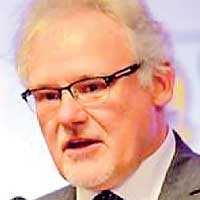
Ensuring the quality of services rendered to high net worth individuals arriving to the island on private jets demanding exclusive amenities important – Gary Dolski
While the Controller of Emigration and Immigration, Ranasinghe, alluded that a joint inter agency with the Customs, Department of Immigration and Emigration and the airport services will alleviate some of the impending bottlenecks, it is equally essential to formulate a common objective so that all stakeholders could work towards a common goal. In addition, long queues at the departure terminal is a factor which could also dissuade international travellers from a repeat visit to the island.
While the relevant authority is taking concerted efforts to expedite the process through the introduction of e-gates, opening designated counters for business class passengers and enacting a new legislation to grant electronic visas to swiftly enhance the visa processing of applications and backend monitoring systems, inter personal skills of Emigration officers are in much need of improvement to warmly welcome more international travellers.

Conundrum facing most Government agencies is absence of coordination and communication – P.S.M. Charles
Inconsistent aviation policies
The leading Middle Eastern carrier to Sri Lanka, Emirates Airlines Country Manager to Sri Lanka and Maldives, Chandana De Silva, stated that with four flights a day to the country, the Arab carrier transfers 400,000 passengers to the island annually. As such, with a benchmark of attracting 4.5 million tourists by 2020, airport services should be more inviting to encourage international carriers, low cost airlines and charters to commence direct operations to the country.
Although strengthening both the bilateral agreements between countries and the open skies policies will indirectly promote Sri Lanka as a destination, other ancillary services such as aircraft maintenance, re-building, bunkering and catering services should concurrently improve to ensure an efficient development of the aviation industry in the country. More importantly, encouraging direct scheduled flights, Charters, and low-cost carriers will indirectly promote the destination in overseas markets.
For instance, with Swiss Air’s inaugural operation to Sri Lanka in November, industry personnel projects an influx of Swiss tourist arrivals to the country. Nonetheless, a long-term Aviation Policy with clearly defined activities for effective implementation will ensure improved connectivity and contribute towards the achievement of 4.5 million international arrivals by 2020.
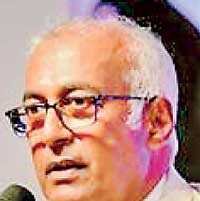
With four flights a day to the country, the Arab carrier transfers 400,000 passengers to the island annually
– Chandana De Silva
Substandard quality of ancillary services
Whilst a congested airport with 9.5 million international arrivals cramped into it is a significant deterrent in attracting further international arrivals, enhancing road connectivity is of paramount importance to ensure a pleasant experience. Chairman of Equatorial Aviation Solutions and Chief Executive Officer of Metrojet Ltd., Gary Dolski argued the central importance of ensuring the quality of services rendered to high net worth individuals arriving to the island on private jets demanding exclusive amenities. This includes easy access to the destination, prompt clearance at Immigration and access to other elite facilities.
Although Sri Lanka is lauded for its cultural heritage, scenic beauties, cuisine, wildlife and unpolluted beaches, inaccessibility to the final destination in a short span of time will avert high end international travellers to competitor destinations such as the Maldives and Seychelles.
Similar sentiments were echoed by the Assistant General Manager, CHEC Port City Colombo Ltd., Simon Tham, on the importance of road connectivity to the international Financial Centre which will also house central park and island living, the marina and an international island. This warrants for improved transport network to this locality and in the sub-urban regions within the country.
Despite concurrent plans to develop the Central Expressway, extend the current expressways to improve road connectivity to the north and the east, build an unground tunnel and a light rail transport system to the Financial Centre, and the ongoing airport expansion project to welcome 4.5 million tourists by 2020 is much to be desired.
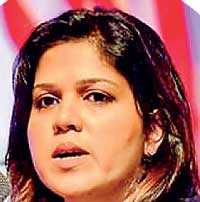
Air connectivity key for destination marketing – Manik Suriyaartchi
Developed human resources
Attracting a highly-skilled workforce equipped to cater to the needs of several millions of tourists including high end clients by 2020 is a prerequisite for Sri Lanka to become a high valued destination. At present, the dearth of professional education bodies fail to recruit qualified trainers, outdated curriculum to cater to the soft skills training, under equipped facilities for practical demonstrations, and an absence of on the job training are some of the impending human resource challenges in the industry.
Managing Director of the Dusit Hospitality Management College, dusitD2 the Fort Manila, Lars Eltvik, underscored the importance of recruiting personnel equipped to effectively function and meet the demands of both the industry and of the clients. As such, the establishment of the Dusit training college adjacent to the hotel will address many of the impending human resource challenges.
The short courses and other trainings on offer will up-skill personnel employed at the front office, housekeeping, room services and on soft, vocational and communication skills to meet specific industry requirements. While these exclusive training courses will address market needs, Sri Lanka tourism should make concerted efforts to encourage new recruits to the industry without losing them to other Middle Eastern destinations.
Indisputably Sri Lanka’s progress made thus far shows much promise to welcome a large volume of international travellers in the next couple of years. Nonetheless, the issues discussed in this article are not foreign and have been deliberated at great lengths in several forums and policy documents.
The elephant in the room is not only that Sri Lanka lacks a tourism product or the incumbent human resource constraints, it is that the strategies in place should be consistent, personnel in positions of authority ought to be committed and far sighted to execute the plans and achieve these desired objectives.